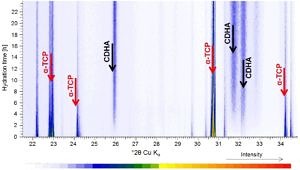Biomaterials
Hydroxyapatite and tricalciumphosphate – degradable inorganic bone substitution materials
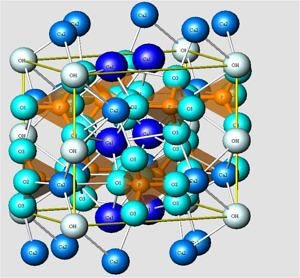
Implementation of biomimetic processes and organisation is the basic principle how to create innovative bone substitution materials. Synthesis of cellular structured materials with hierarchic porosity is intimately connected with the medical requirements on bone constitution materials. The striking advantage of nano scaled microporous calcium phosphates (CaP), which are organized within another macroporous system (Ø 0.1 to 1 mm), is correlated with their excellent resorption properties and accelerated in vivo bone formation.
Phase composition of CaP-powders, CaP-ceramics and hydrated CaP-cements are quantified by the Rietveld refinement of XRD data. The link between mechanical strength and mineralogical phase composition is investigated. Influence of biocompatible additives on the hydration and strength is analysed with a combination of heat flow calorimetry and in-situ XRD at 37°C (body temperature).
Prof. Dr. F. Goetz-Neunhoeffer, Dr. K. Hurle
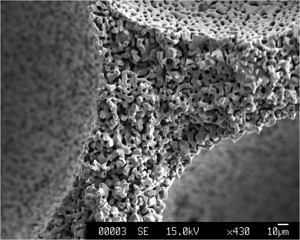
Osteoconductive biomaterials – mechanical interaction of endothel cells on functionalized surfaces of cellular bioceramics
Development and improvement of bioactive materials for implantation with optimized physiological compatibility, functionality and high potential for bone regeneration (osteoconduktive biomaterials) are in focus of the cooperative research activities within groups from technical, medical and natural sciences at the University of Erlangen. The produced materials are based on the fundamental idea of biomimetically controlled material organisation. Bioactive ceramic materials with hierarchically structured pores are synthesized (Mineralogy Group) and the surfaces with layers of osteoconductive substances modified (Material Sciences Group). This structured and functionalized bioactive cellular biomaterials are investigated with respect to cell mechanics and processes between the organic cells and the inorganic material (Biophysics Group). The aspects of the organo-matrix-interaction of porous implant materials is evaluated in-vivo with different reserach groups of the university hospital (Oral Surgery Group, Plasitc Surgery Group, Rheumatology Group) with the aim to further improve biofunctionality.
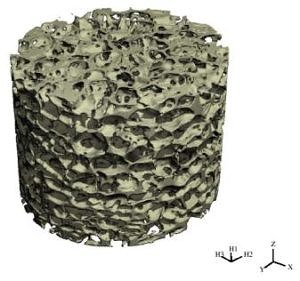
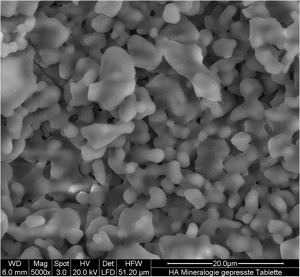
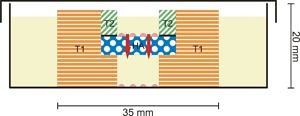
Calcium Phosphate Cements
Calcium phosphate cements (CPCs) are medically applied as bone substitutes due to their excellent biocompatibility. They are fabricated by mixing reactive calcium phosphate minerals like tricalcium phosphate (TCP) with an aqueous mixing liquid. This results in the precipitation of less soluble hydrate phases, e.g. Brushite or Hydroxyapatite. According to the hydration products, CPCs can be divided into two different types: apatite resp. brushite cements. While CPCs have the advantage of being easily adjustable to the defect site. Butt their low mechanical strength and brittle performance currently limits their application to non load bearing defect sites.
CPCs can be modified with various additives to enhance their properties relevant for clinical application, like setting performance, mechanical strength, injectability and biodegradability. At the Erlangen Applied Mineralogy Group we are focusing on CPCs with different additives, for example polymers, phytic acid or ionic dopants. Hydration of the cements is mainly examined by isothermal calorimetry, in-situ XRD and in-situ 1H-NMR at 23°C and 37°C.
